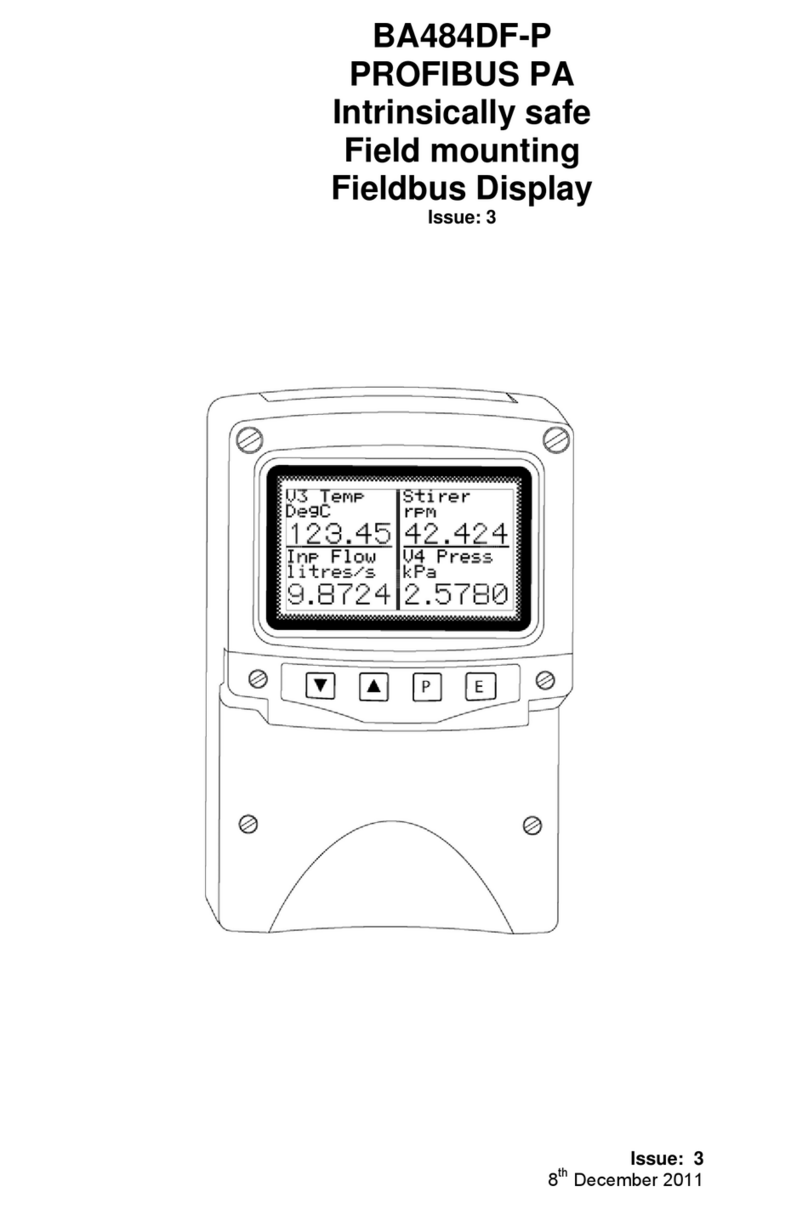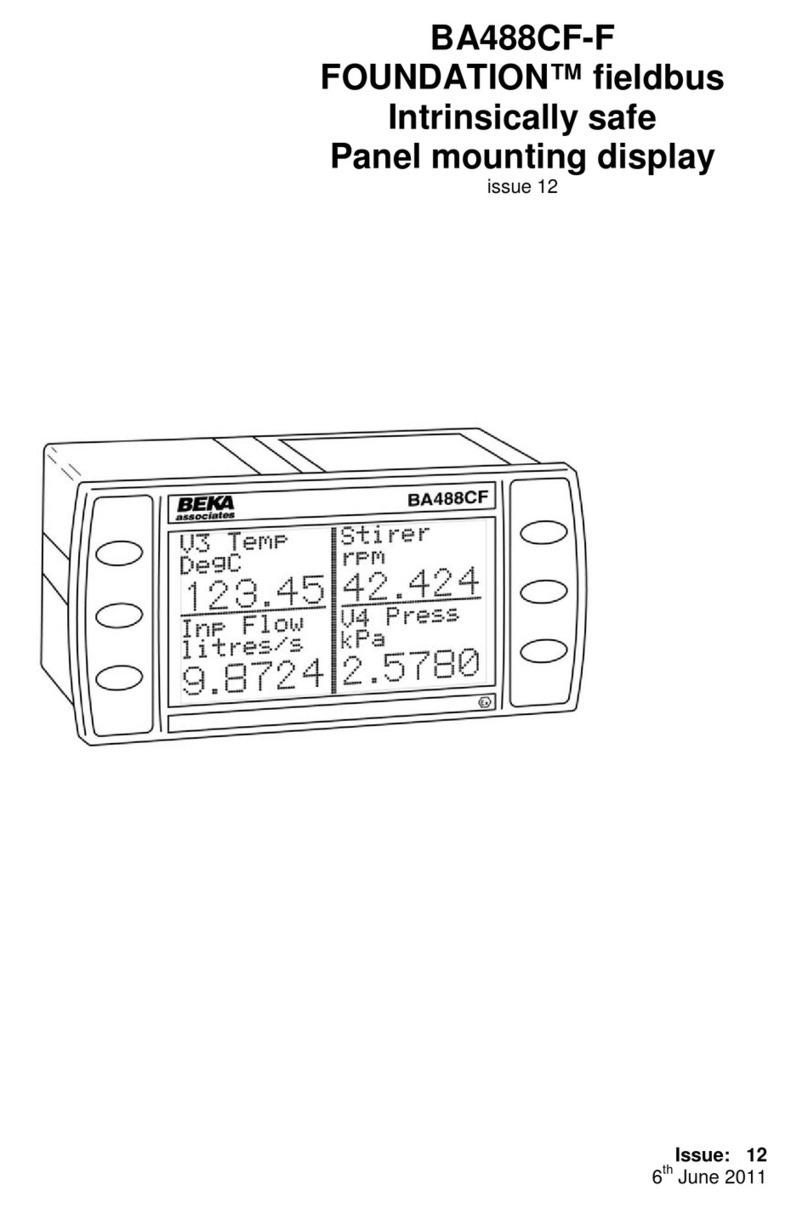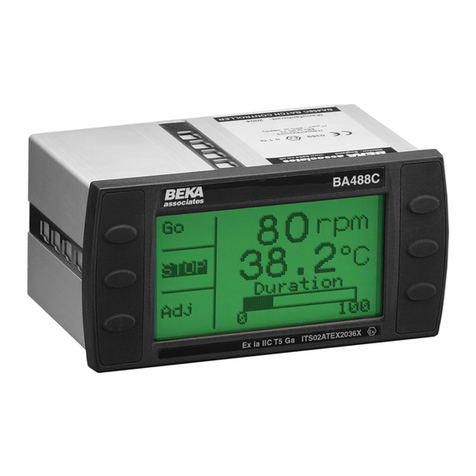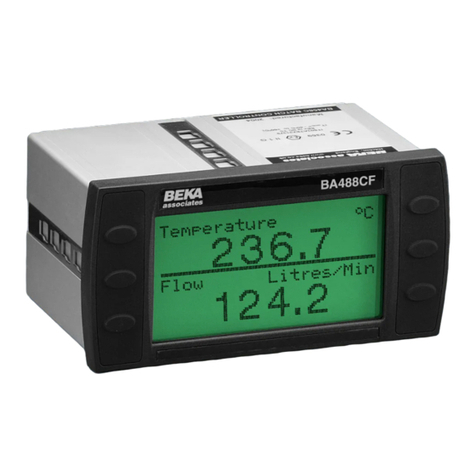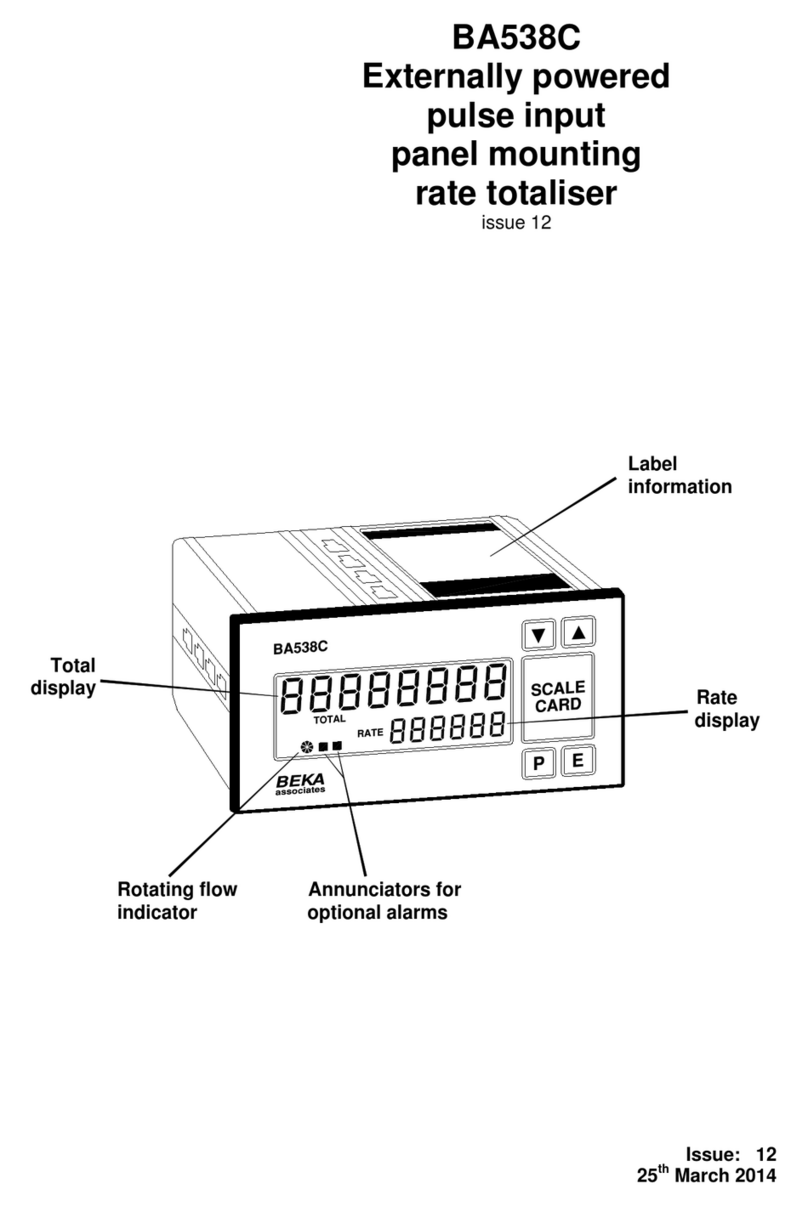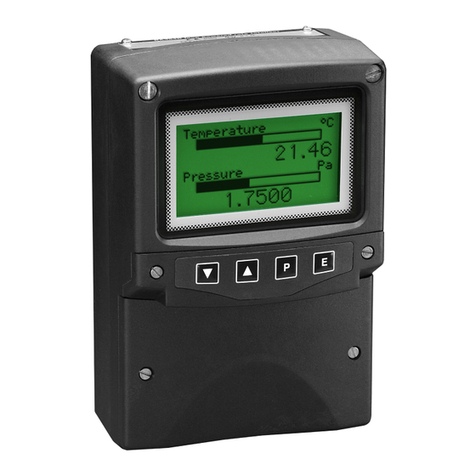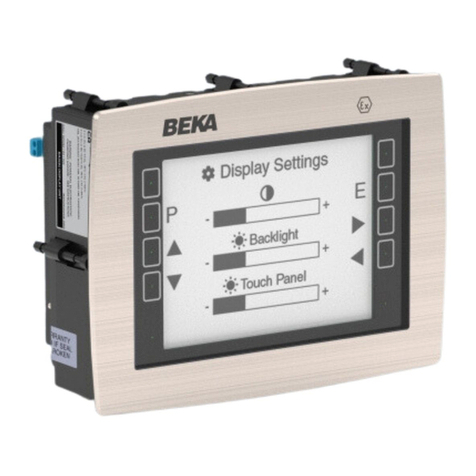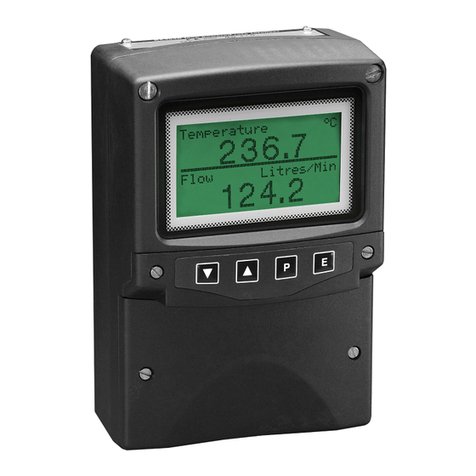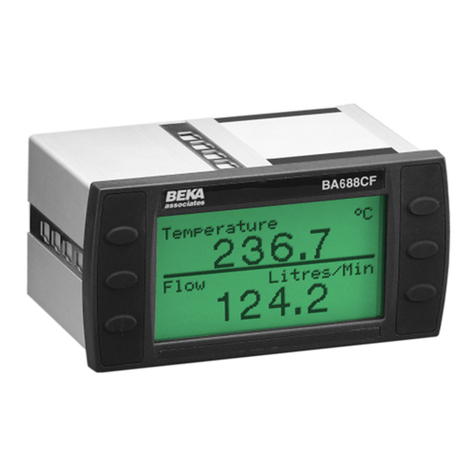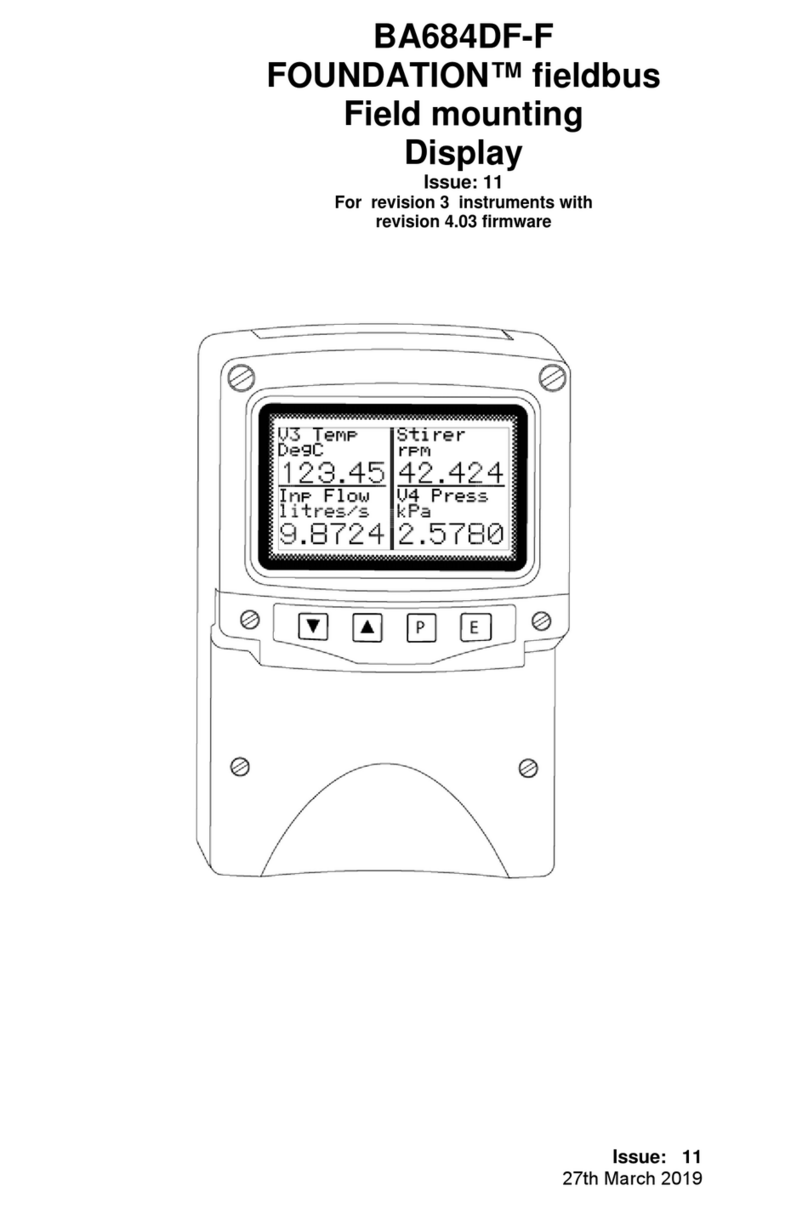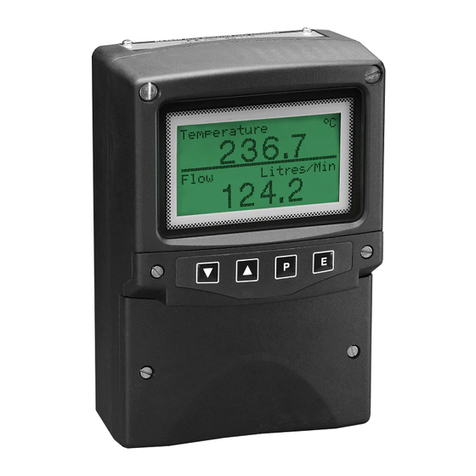
5.4 Accessing the instrument configuration
menu.
Throughout this manual push buttons are shown in
italics e.g. PE▼▲and legends displayed by
the instrument are shown within inverted commas
e.g. 'Enter Access Code'. Operating the Pand E
push buttons simultaneously accesses the display
configuration menu. If the BA688CF-F is not
protected by an access code the main menu will
be displayed. If an access code other than the
default code 0000 has already been entered, the
BA688CF-F will request that the access code be
entered.
Using the ▼or ▲button set the first digit of the
code which will be flashing. Pressing Pwill transfer
control to the next digit, which should be adjusted in
the same way. When all four digits have been set,
pressing the Ebutton will enter the access code.
If the code is correct the main menu will be
displayed, if the code is incorrect ‘Invalid Code’ will
be displayed.
When entering an access code, timeout will occur
and the instrument will automatically return to the
operating mode ten seconds after a push button
was last operated. In all other menus, timeout
occurs after sixty seconds.
The structure of the display configuration menu is
shown in Fig 6. Navigation is achieved by
highlighting the required function using the ▼and
▲buttons and then operating the Pbutton to
display the selected function sub-menu, from which
a further selection or adjustment may be made.
Operating the Ebutton moves the display back one
level.
A flashing highlight indicates that an option or
alphanumeric character may be selected using the
▼and ▲buttons and entered using the Ebutton.
If only one entry or adjustment can be made in a
sub-menu, the display will automatically move up
one menu level when the adjustment is entered. If
more than one adjustment can be made in a sub-
menu, the highlight may be moved to the second
variable using the ▼or ▲button after the first
setting has been entered. Operating the Pbutton
allows the second variable to be adjusted.
When multiple numeric or alpha characters are
adjusted e.g. an alarm setpoint or a tag legend, the
adjustment is made one digit at a time using the ▼
and ▲buttons. After the first flashing digit has been
set as required, the flashing highlight can be moved
to the next digit by operating the Pbutton. When all
digits have been set, operating the Ebutton will
enter the setting.
Following completion of the instrument
configuration, the Ebutton should be operated to
step the display back to the main menu. One more
operation of the Ebutton will then return the
BA688CF-F to the operating mode.
5.5 Screen selection
The BA688CF-F can display up to eight fieldbus
variables. These are identified as IN_1 to IN_8.
The fieldbus variable that each one represents is
determined by the BA688CF-F configuration at the
fieldbus system host – see the FOUNDATION™
fieldbus Interface Guide.
This sub-menu allows one of eleven standard
display formats to be selected. The standard
formats contain one, two, three, four or eight
fieldbus variables some with bargraphs as shown
below.
One variable
Two variables
Four variables
Eight variables
One variable + horizontal bargraph
Two variables + horizontal bargraphs
9

